2019 Honda Clarity PHEV
Review: 2019 Honda Clarity PHEV
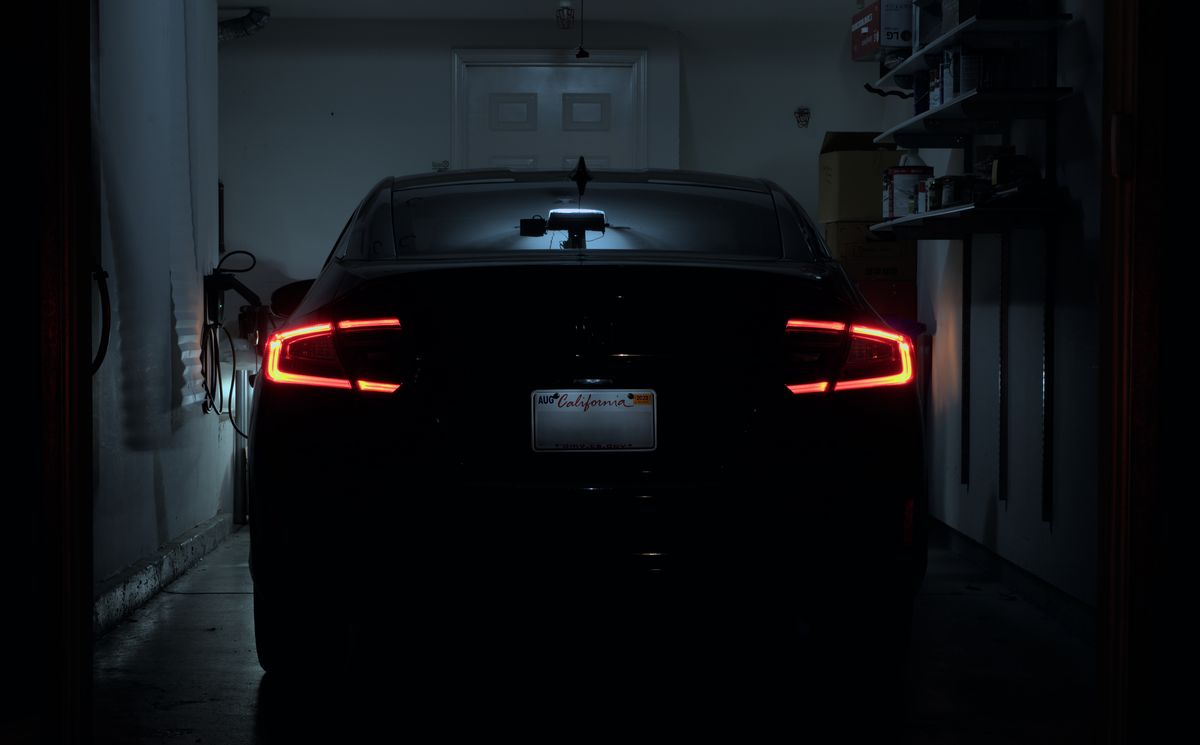
I bought a new-to-me car recently and I've really been enjoying it, so here's a review.
TL;DR
2019 Honda Clarity PHEV
Super OK!
The Honda Clarity PHEV is the perfect transition vehicle between full on electric vehicles and gas powered cars.
Review
Exterior
I really like the exterior design of this car. Sharp lines everywhere complement the extra mean looking daytime running lights in the front. Stylistically, it's the most similar to the 10th generation Civic and the 10th generation Accord, but aside from the distinct chrome nose and headlights, it actually doesn't share a lot of shapes with either.
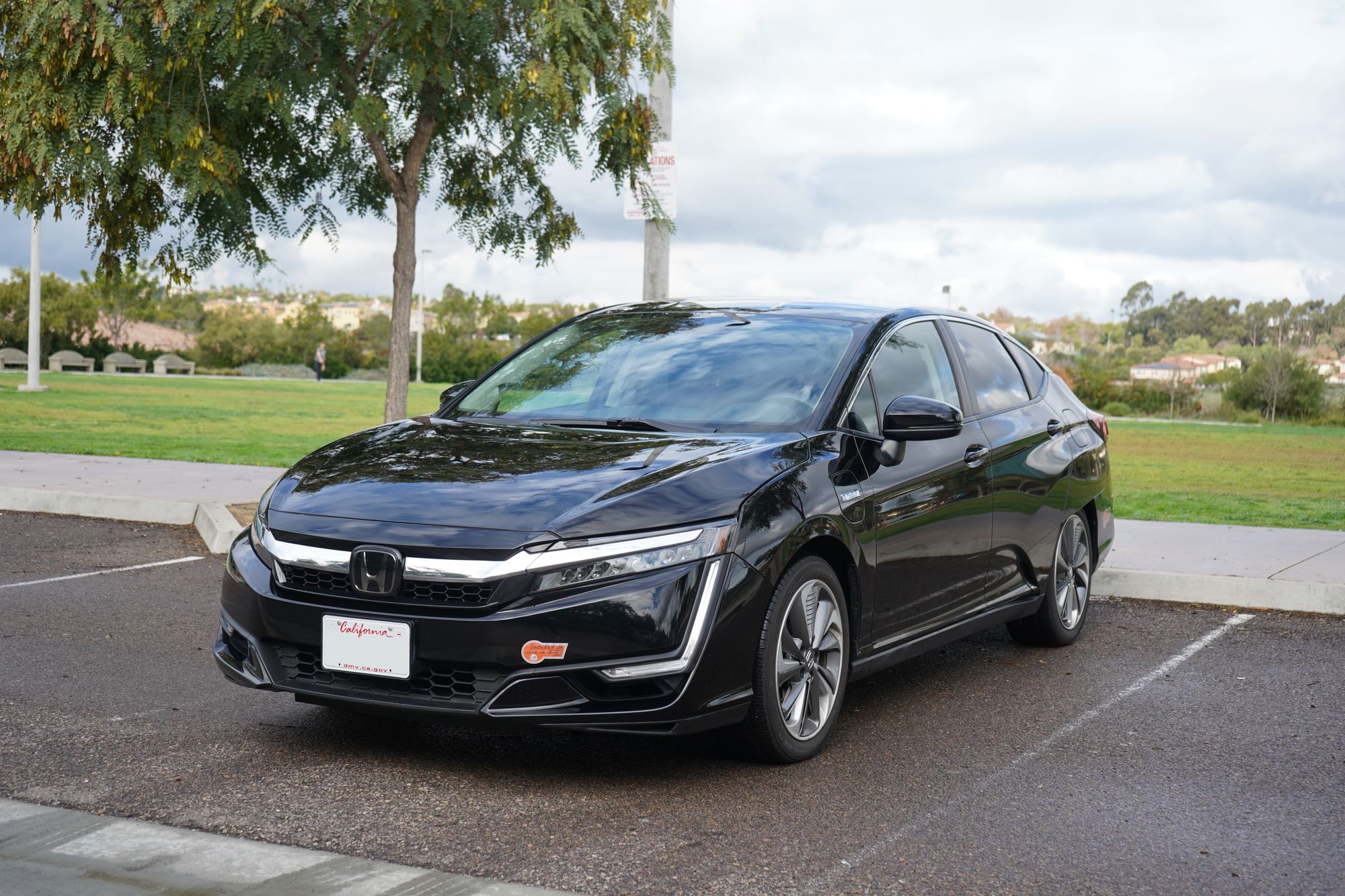
The roof line from the B-pillar back to the rear of the car is slightly bulbous and raised, presumably for aerodynamics, but it doesn't look completely out of place. However, this has the distinct side effect of making the car appear to have a hatchback trunk, when it in fact, does not, and is a sedan. It does some funny things with the rear windows, which will be covered later in the interior section of the review.
I'm a big fan of LEDs (bye halogens), and to discover that every significant light on the exterior is assembled with LEDs of some kind tickled my brain correctly. Interesting to note that for the equivalent generation (10th) for both the Civic and Accord, LED headlights are not made available until the Touring trim, and LED brake lights are only available on the Accord. This Clarity is a base trim, but you wouldn't know it from the outside.
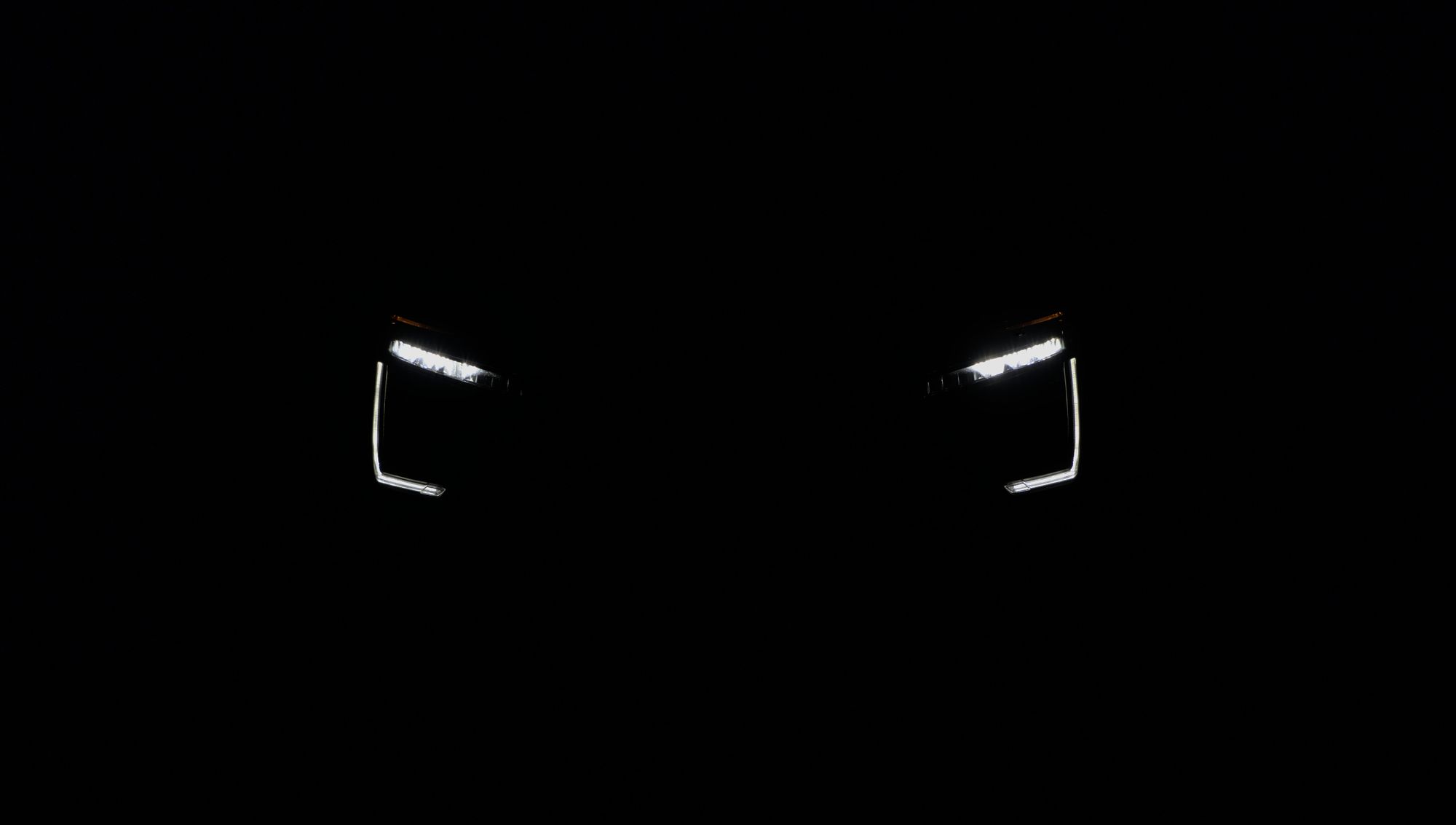
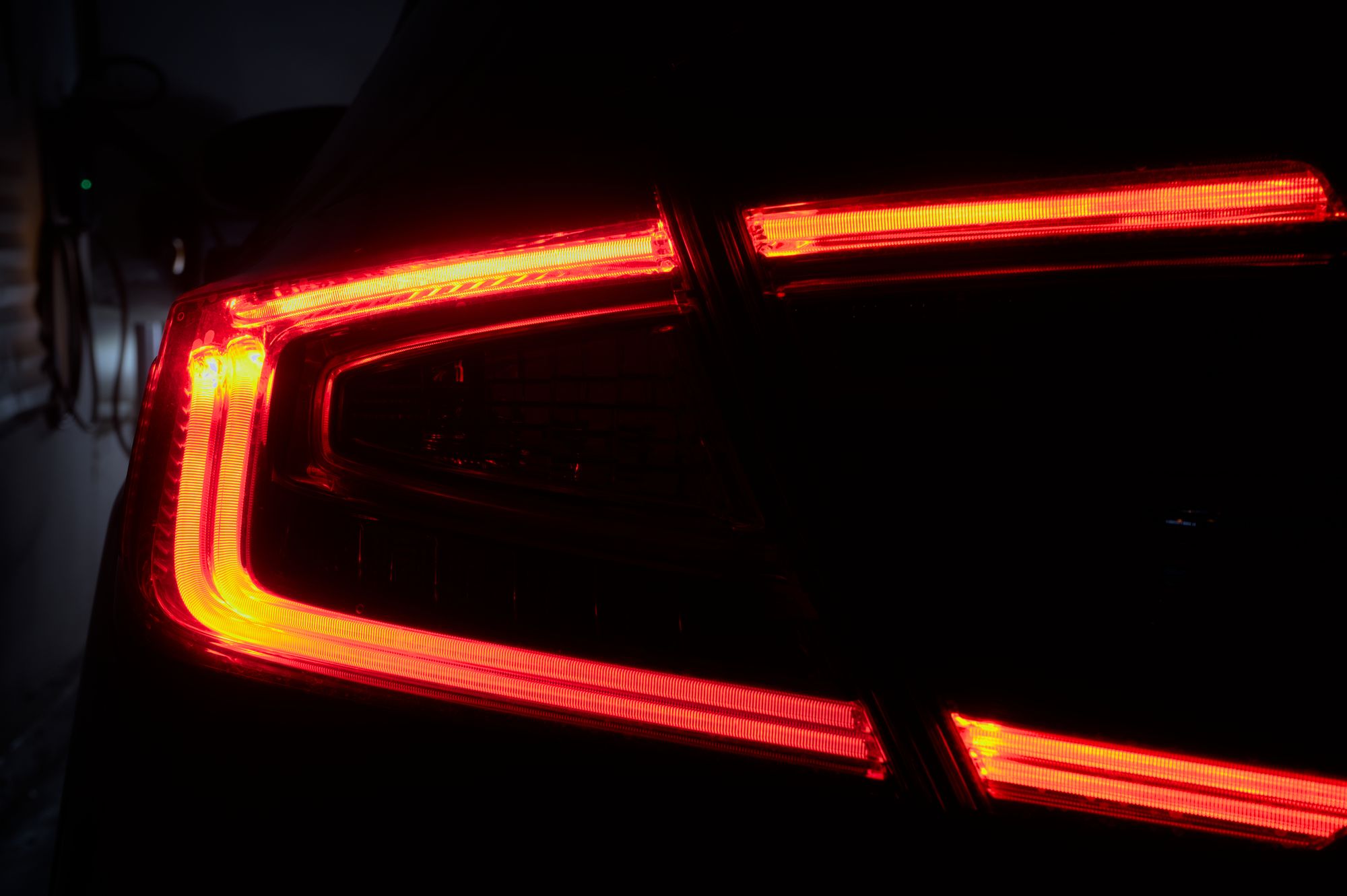
Interior
I specifically looked for a base trim Clarity. Why? Here are the ONLY extra things that the Touring trim gets.
- Navigation system.
- Power seat adjusters w/ memory.
- All leather seats and trim.
That's not a lot of difference between the Touring trim and the Base trim.
Navigation, I don't need. Usually in-car navigation systems suck, and Android Auto/Apple CarPlay are better in every way imaginable. Luckily, this car comes equipped with Android Auto and Apple CarPlay, so we've solved that problem handily. While it is wired and not wireless...that's fine. There are adapters that solve that problem but I would rather keep my phone charged anyway.
Power seats are a nice to have, but I always find that adjusting them takes too long. I would rather just move some levers quickly and be done, rather than wait for it to slowly move into place. But, useful for multi person households (for which I am not) or if you get it serviced a lot (for some reason). Plus, not having it saves a (very small) amount of weight, for efficiency, of course.
Living in Southern California means that full leather seats is a no-go. ESPECIALLY black ones. Cloth seats are a must. Plus, I slide around too much on leather seats. Same goes for the steering wheel. I'll take the textured rubber grip rather than a hot leather one. Sure, it feels cheaper but...I'll take not getting burned.
There's a nice shelf below the shifter, perfect for a phone or a small bag. It's also subtlely lit at night! A nice touch when its dark and you can't see anything.
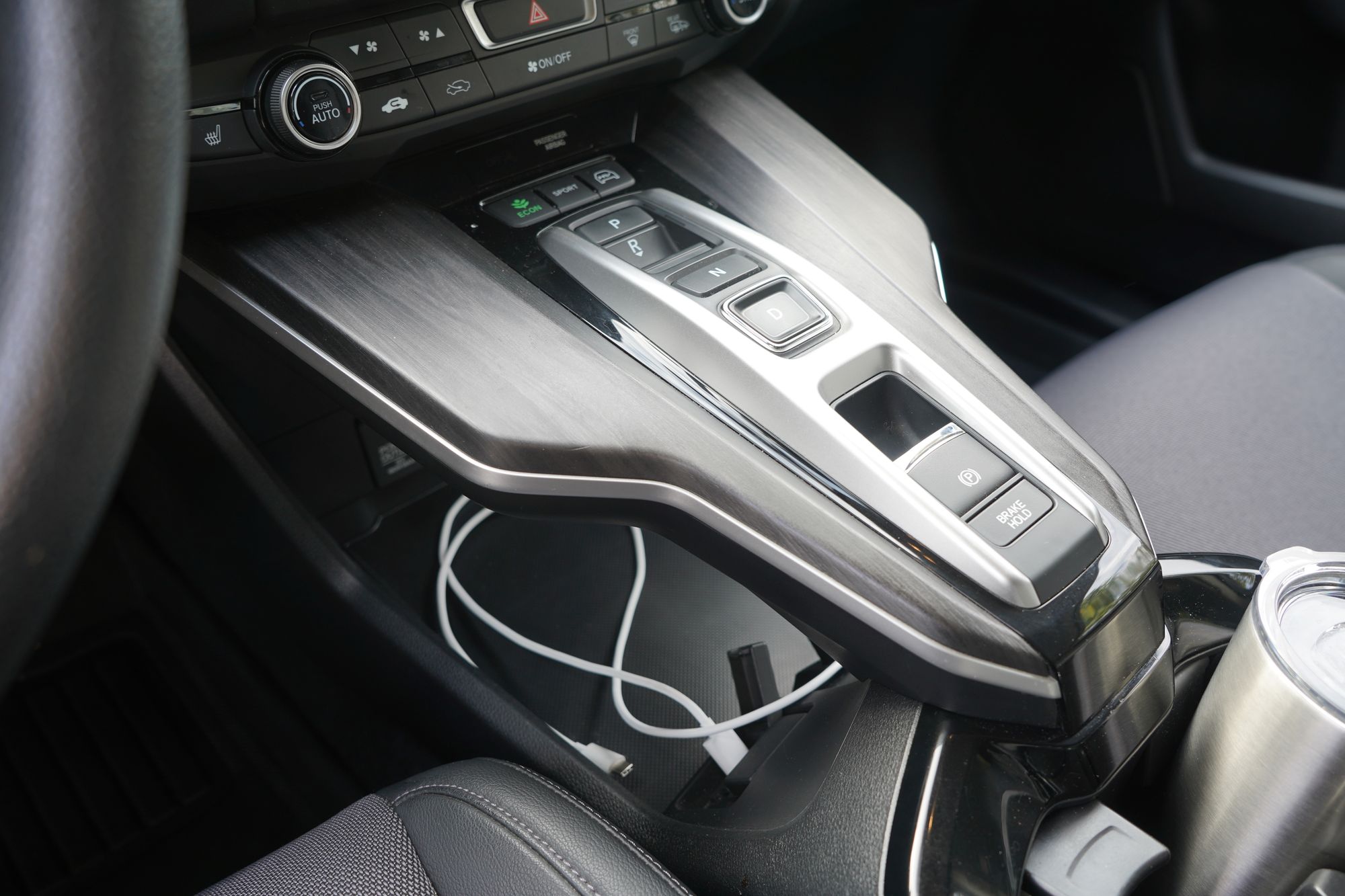
Because of the slight loss of space inside of the trunk compartment due to the batteries raising the floor of the trunk, the roof of the trunk is raised, along with the upper deck of the trunk, which intrudes into the passenger compartment. This reduces the size of the rear window. Honda's solution to this? Put another window below it. Then, put a very heavily tinted window on the outside as an accent piece that doubles as a window. It's an interesting design choice because, while it does give better rear visibility, cars behind you with headlights on that are usually blocked by the trunk door are now suddenly visible. Good thing the auto-dimming mirror helps. This pass through window design is apparently a holdover from the CRX and and more recently, Accord Crosstour.
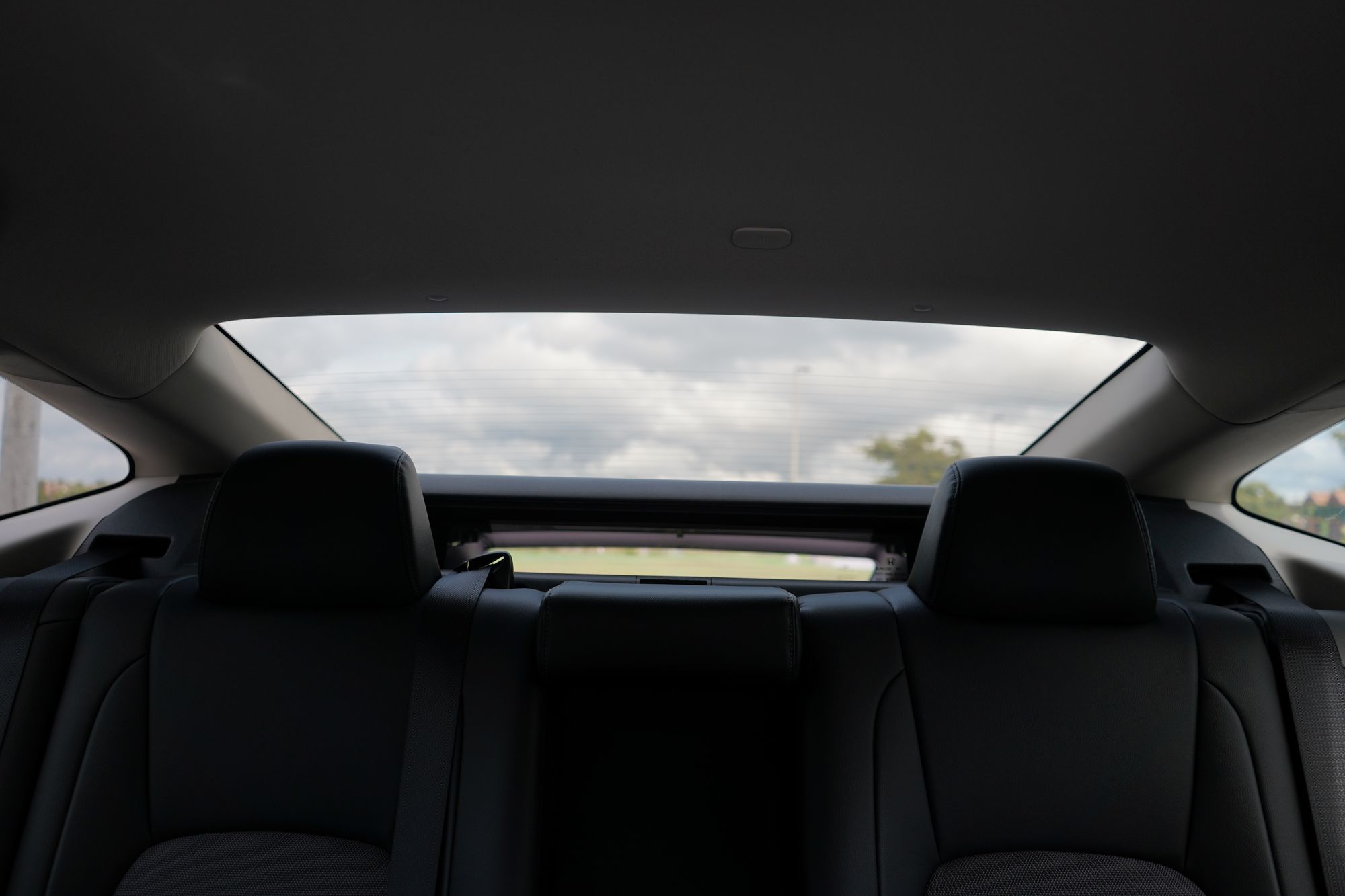
Infotainment
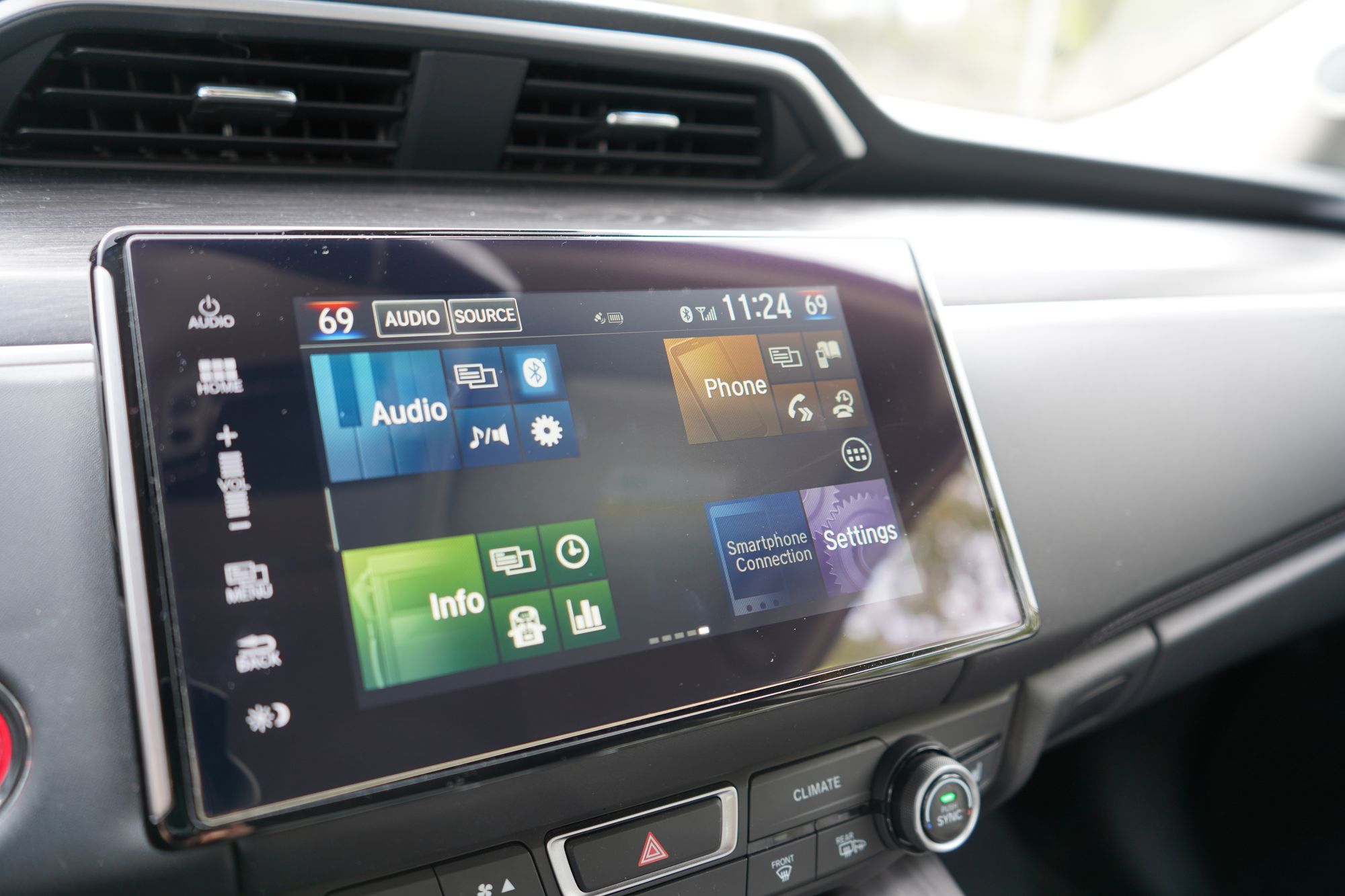
Honda is one company that has left physical controls (mostly) in place for its infotainment systems. The Clarity unfortunately suffers from the "early 10th gen" infotainment where the volume knob is replaced with a touch control instead. It doesn't seem like any Claritys in this generation got the knob, but fortunately I have not found myself using that much, and relying completely on the dedicated steering wheel buttons instead.
The infotainment display is a bit outdated looking (it's apparently running some version of Android 4.4), but it's functional and works well enough. I have not yet gotten HondaLink to work, however. I called their customer service and got escalated to creating a ticket with their in-car entertainment support team, but haven't been able to get in touch yet. But again, Android Auto works well to replace the center screen entirely.
The gauge cluster has some neat touches. I especially enjoy watching the energy meter recharge my battery as I go down a hill. Whats especially interesting is that I can chose to have this information shown in either my gauge cluster, my infotainment screen, or BOTH! I've ended up choosing the display based on if I have Android Auto running or not.
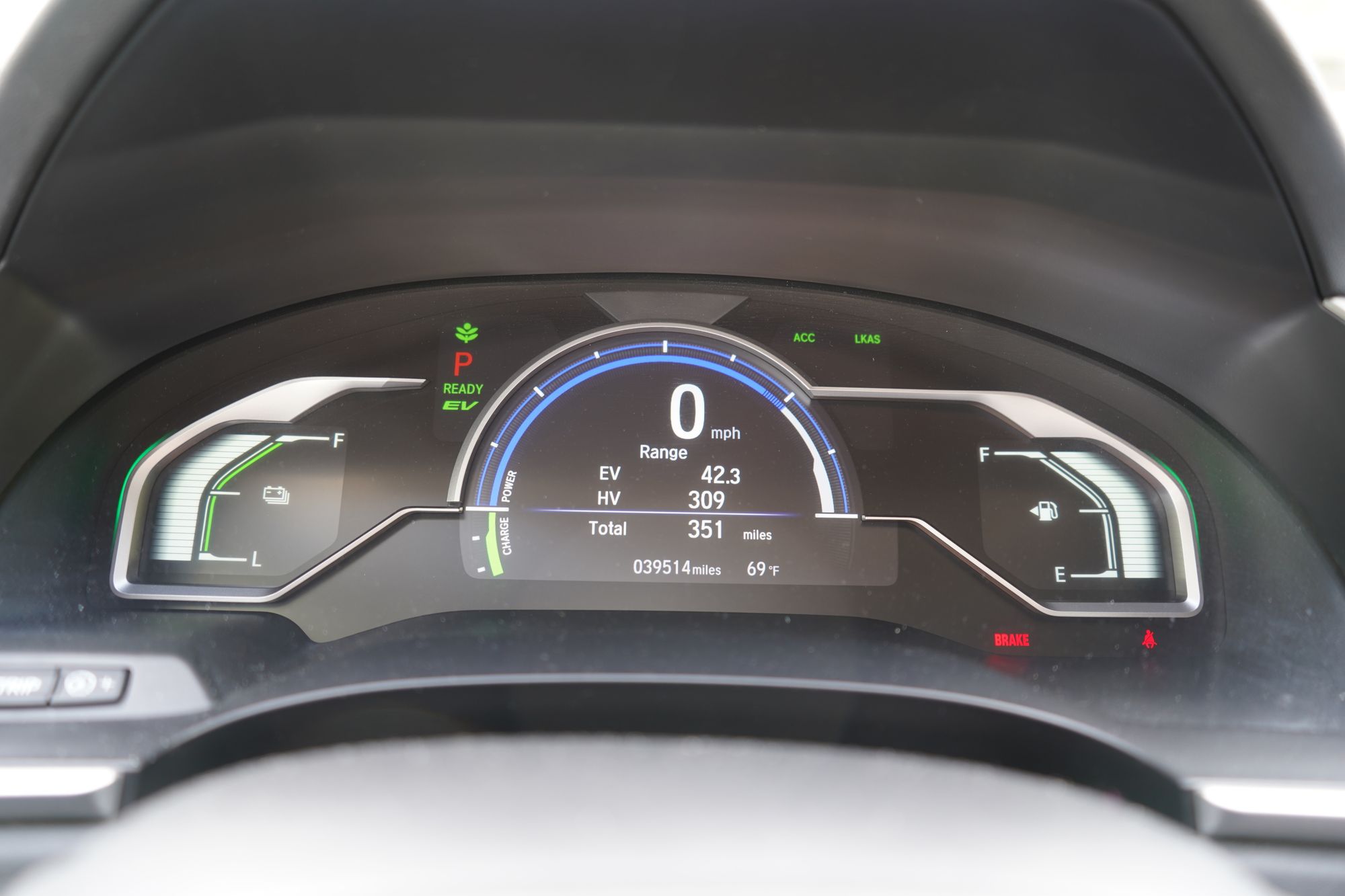
Finally, LaneWatch is a super cool feature. When you signal, it turns on a camera that only shows the right side of your car, exactly where the blind spot is. While useful, this is the only sort of cross traffic/blind spot avoidance system that exists. Adjusting your mirrors correctly should fix that though.
Driving
The Clarity PHEV is equipped with the following powerplant:
- 1.5L 4-cylinder Atkinson Cycle Engine
- 7.0 gallon fuel tank
- 17 kWh Lithium-Ion battery
- 212 horsepower (total system)
Source: Honda
Blah blah blah, numbers. Here's what you really need to know.
Acceleration is smooth. If driving in EV only mode, getting up to speed is not the fastest thing ever (it's not a Tesla) but is comfortable. Using both the EV motor and the gas engine combined means there is no issue with range or climbing hills.
The car has three driving modes: econ[omy], normal, and sport. The only difference that this changes is the throttle mapping (when the gas engine kicks in) and how aggressive the climate control is.
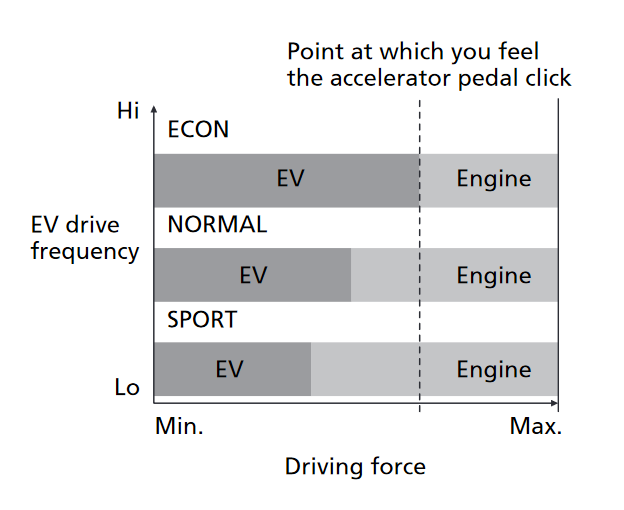
Strangely, EV only mode is not the "fastest" mode. Hybrid mode gets you the most acceleration.
There is one (or two) additional modes, that can be switched on at will: HV and HV Charge. HV, or Hybrid Vehicle, mode indicates to the car that you're ok with not only using EV mode, rather than waiting for one of the crossover points to happen in the throttle pedal. HV Charge allows you to charge the car up to about 60% using the gas engine, which is most efficient at highway speeds.
Actually, using gas is more efficient at highway speeds, after about 46 mph - but obviously using EV only is the most efficient when possible. The ~47 miles of range prevents that from really being too useful though.
Charging
Charging at home is extremely convenient. Once you finish with your day, plug it in like you plug your phone in every night, and have a "full tank" the next morning. I unfortunately don't have a 240V outlet available in my garage, but I do have a 110V one, so I just use that. Since I usually don't need the car until I go to work the next day, Level 1 charging is not an issue, but I will be concerned with how much current the charger may draw if I ever install a 240V outlet.
Charging in public has been an adventure so far. Beside learning all of different terminologies (Level 1 vs 2 charging, kWh, J1772 vs CCS), there are (too) many apps to juggle. My car came with a Honda branded ChargePoint RFID keytag, which I thought was a nice touch. However, I have ended up using my phone the most, just because I already have it out.
I've had the most success with ChargePoint so far. My first ever attempt at public charging was at a ChargePoint charger, and I had to pick the closest and most expensive one closest to where I was. My work has ChargePoint chargers, and at a discount, too. $0.28/kWh may sound like a lot still, but it's better than charging at home at $0.39/kWh. However, living in San Diego, we have the unfortunate predicament of having the priciest electricity in the entire United States, so any discount is welcomed.
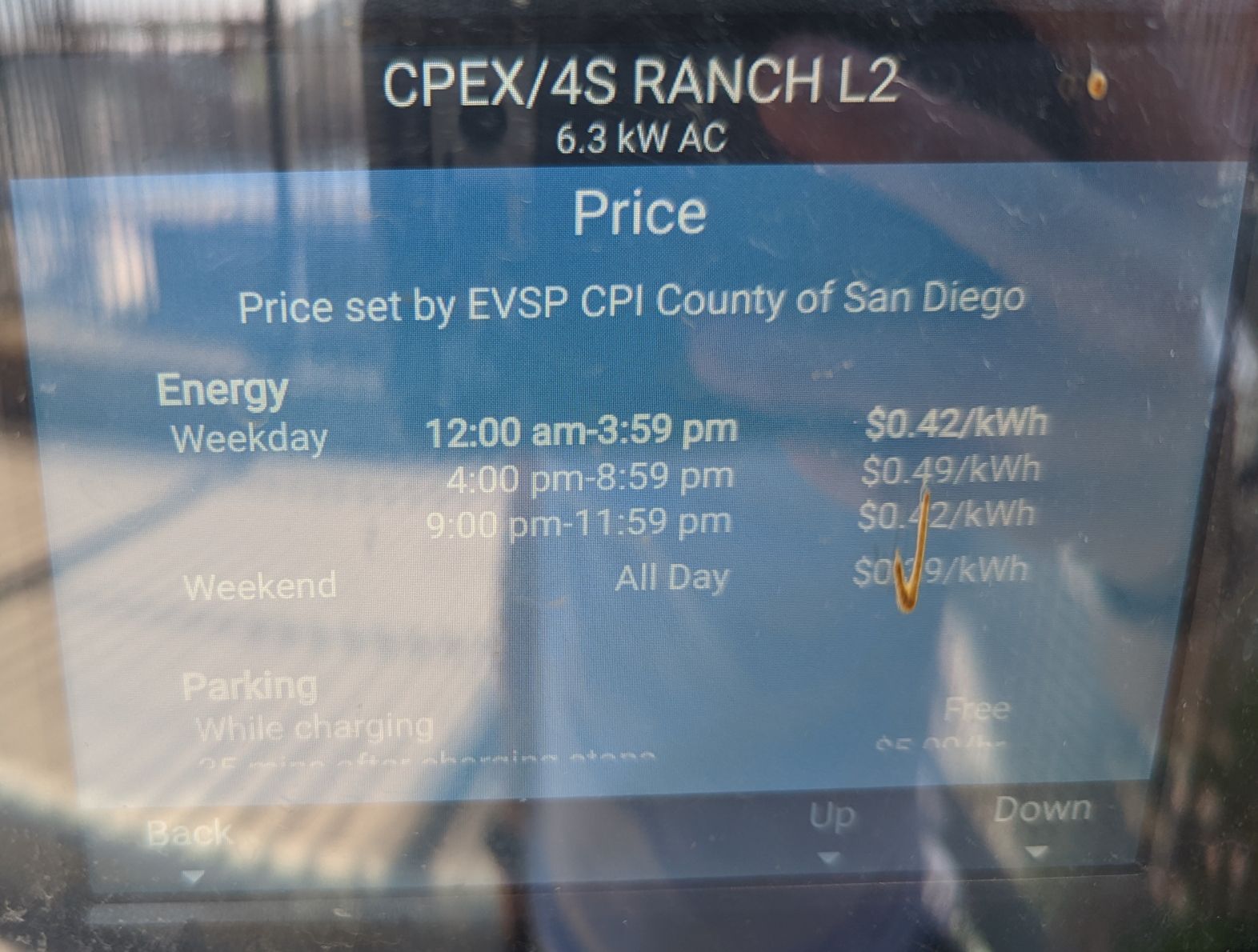
Electrify America on the other hand, has not panned out as well. I stopped by the singular J1772 charger in a Walmart parking lot, and tried about 4 times to get the charger to start delivering me power. I plugged in, swiped start on the app, and...nothing. Alright, well, maybe I did something wrong? Unplug, and plug it back in. Swipe to start. Nothing. After a few tries, I gave up and called the customer service line. 10 minutes of being on hold later, and the customer service rep informed me that the charger was inoperable! What?? Why did I have to call customer service to find this information? Why wasn't it listed in the app, or even on the charger itself? Why didn't the station disable itself if it doesn't work?
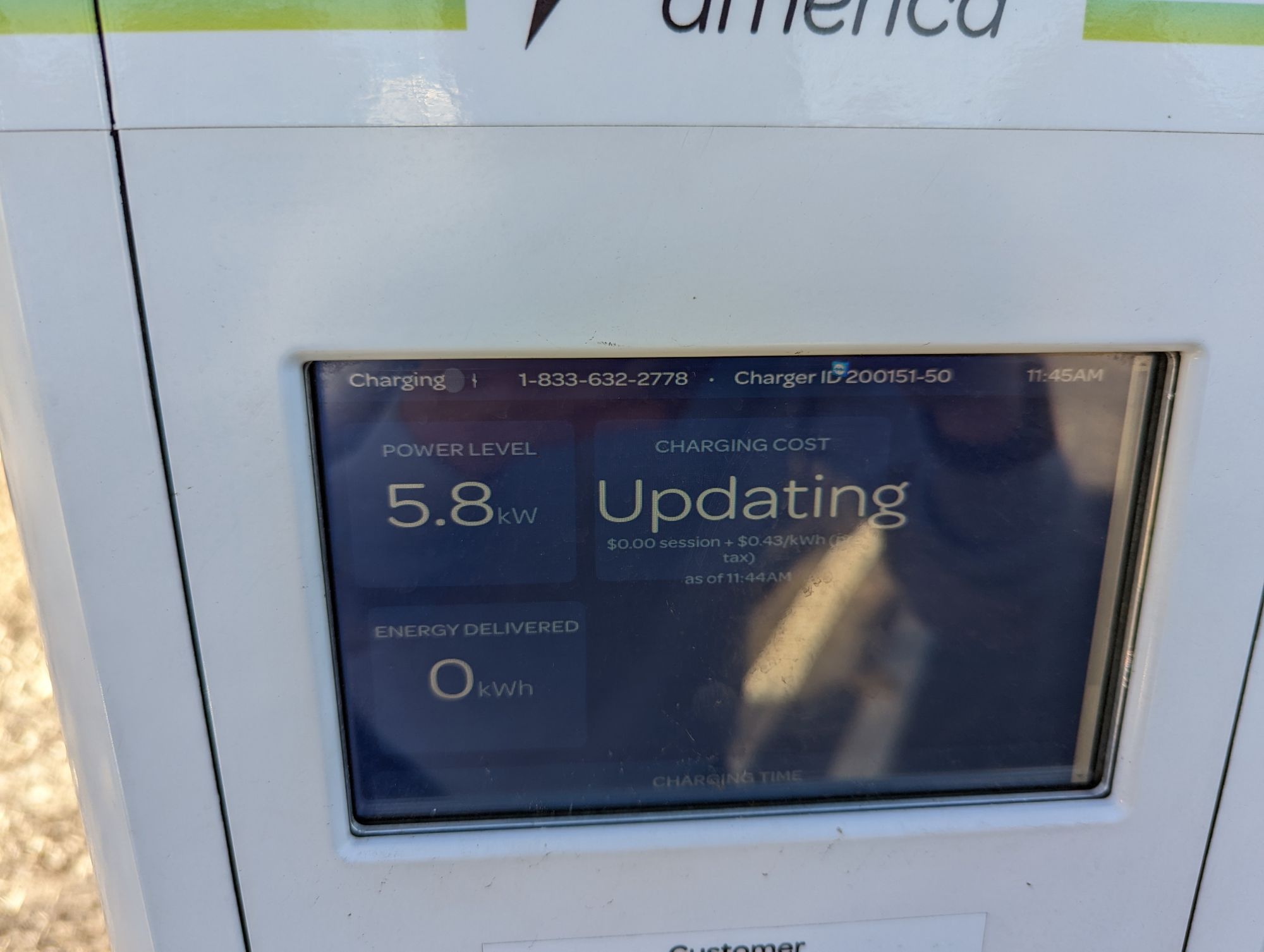
After that stop at EA, I headed to a Volta charger and grab lunch, but all 4 slots had been taken up. With a two hour limit and no enforcement on limits (the app shows plugged in but not charging), there was no point in waiting. So, I just went home.
Here's the moral of the story. First, it's ridiculous that I need 4 different apps to charge at any of these stations. Every time I see a new charger I have to download and create an account for that specific app. Second, public charging infrastructure is clearly not ready yet. I understand that J1772 Level 2 charging is not as common (and CCS is a LOT more common now), but even then, you'll end up with similar struggles of station availability and inoperable stations. Because it's not gas, you can't just fill up and go on your merry way - thus the abundance of chargers at places that people can stay at for long periods of times (strip malls, shopping centers, etc) while waiting to charge.
Availability
This car is no longer being manufactured. The Clarity line was discontinued in 2021, and the factory was shuttered entirely, so as much as I would have liked to buy this new, I could not.
I spotted this specific one on CarMax on a Friday morning, went to take a walk around Friday evening, test drove Saturday afternoon, and went home with the car Saturday evening.
This was my first time buying a car, let alone through CarMax. The process was pretty straightforward (and they actually let me test drive it! A story for another time.) and after a few hours of paperwork and waiting, I was handed the keys, and took a cheesy picture with a big bow on top.
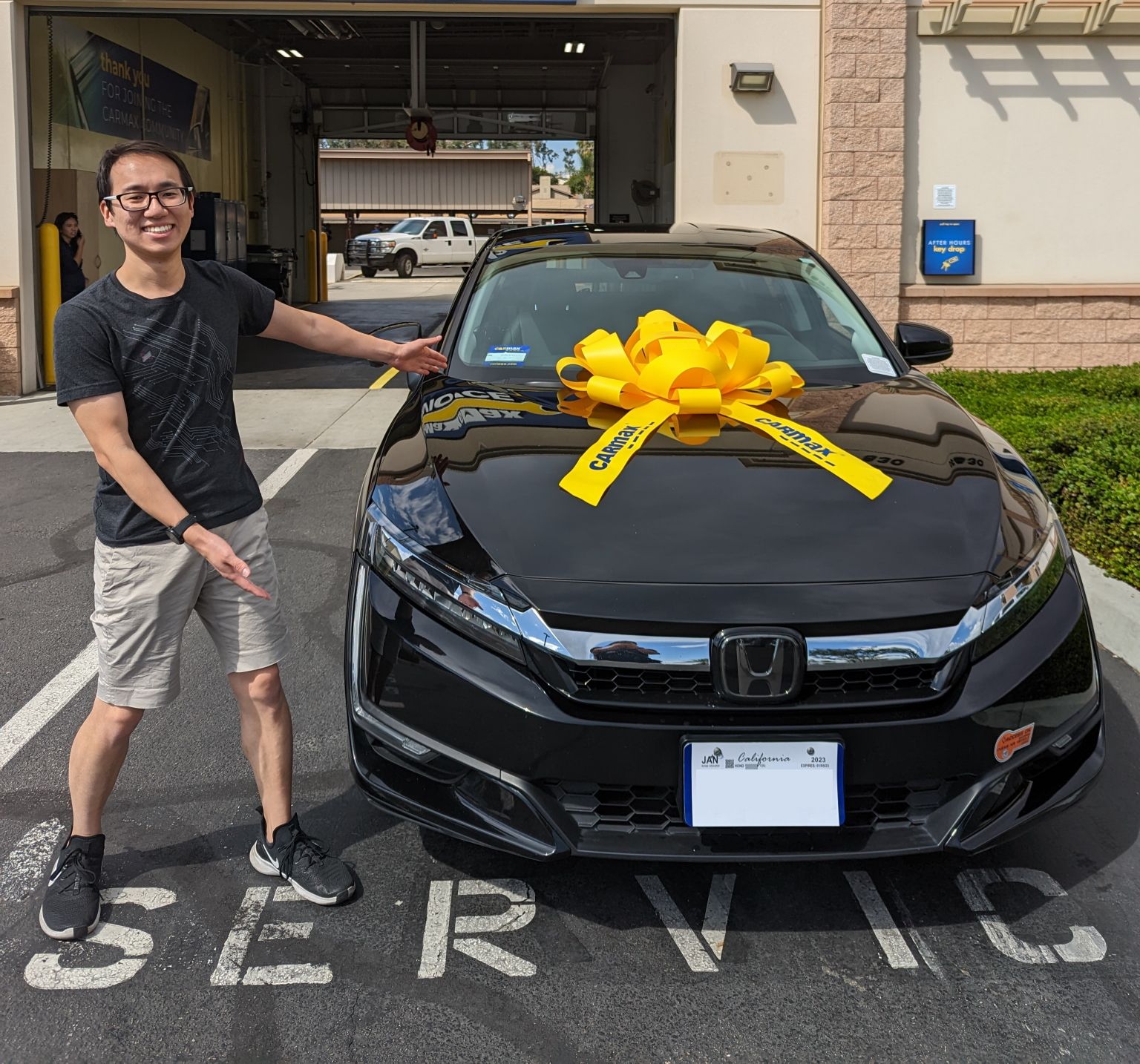
Aftermarket Support
This is an interesting one. While in a shopping center with an AutoZone, I decided, hey, may as well purchase some oil/filters for some regular car maintenance. I usually head to my friend's place to do oil changes in his garage, but with the Clarity, Honda for some reason decided not to put ICE run time statistics anywhere. So I had, one, a difficult time finding the exact filters and oil I needed and two, had to buy an engine hour meter just to know how long the engine has been running.
Summary
The Clarity PHEV does a lot of things right. I think it was killed off too early, and that Honda should have kept pursuing their EV/PHEV platform until absolutely required. It makes me more upset that we aren't getting the Honda e in the US, but I hope that their "2040 EV plan" works out, because I know they can do it. Their sluggishness in adopting EV technology has resulted in them having to rely on GM's Ultium platform, rather than something homegrown. Their partnership with Sony is another we have to keep an eye on.
Plug-in hybrids are perfect for those who aren't ready to fully commit to the EV life, but also want a taste. While there are some trade-offs (namely, range, and extra weight from an engine), for us to hit climate targets, any efficiency is better than nothing.

